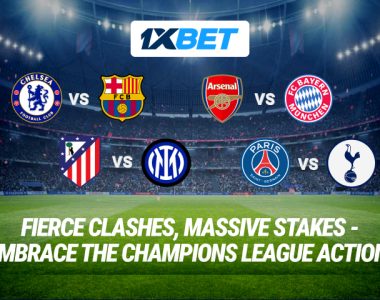
Global club football is entering a bold new era with the arrival of the revamped 2025 FIFA Club World Cup. Expanding from a modest seven-team event to a 32-club showdown, this edition significantly raises the competitive stakes. Backed by a staggering $1 billion prize pool, the tournament is shedding its reputation as a low-stakes exhibition and aiming to establish itself as one of soccer’s most prestigious global competitions.
In this article, we’ll break down the tournament’s top contenders, spotlight the dark horses, and highlight the key players poised to shine. We’ll also examine the financial incentives driving club participation and the logistical hurdles teams must navigate in this expanded format.
A Transformed Tournament Format
FIFA has dramatically revamped the Club World Cup for 2025. This year will see a record 32 clubs from various continents competing.
The tournament runs from June 14 to July 13 and offers a staggering $1 billion prize pool, highlighting the increased financial incentives for teams. This new format intends to elevate the tournament’s global prestige significantly. It marks a departure from its former perception as a minor competition, with the aim of establishing it as one of soccer’s most significant events.
Navigating Qualification Pathways
Over half the field secured berths by winning continental competitions between 2021 and 2024. For instance, Auckland City consistently qualified through Oceania’s Champions League winner spot.
In addition to continental champions, several high-performing non-champions from each federation also qualified for the tournament. Qualification was especially complex in Europe and South America due to overlapping criteria; teams could qualify by ranking or titles, but were limited to two per nation unless multiple clubs won their confederation. The host nation, the United States, is represented by Inter Miami, who earned their spot as the highest-ranked MLS club in CONCACAF’s four-year ranking.
European Powerhouses Dominating the Field
Europe’s UEFA confederation sends a significant contingent of qualified teams. Chelsea, Real Madrid, and Manchester City are among the Champions League winners. Other top European clubs include Bayern Munich and Paris Saint-Germain. Additionally, Inter Milan, Porto, Benfica, Borussia Dortmund, Juventus, Atlético Madrid, and Red Bull Salzburg also qualified.
According to the latest FIFA Club World Cup odds, Paris Saint-Germain and Real Madrid are considered serious contenders, both standing at +400.
Many observers anticipate a dramatic clash between these two powerhouses. Manchester City follows closely at +500. Bayern Munich holds odds of +650. These clubs are expected to advance deep into the competition.
South American Contenders and Their Legacy
CONMEBOL, South America’s confederation, also boasts robust representation. Palmeiras, Flamengo, Fluminense, and Botafogo lead the Brazilian contingent. Argentina’s River Plate and Boca Juniors also secured spots. South American sides have a rich history in this competition. Where fans are welcomed for their pride and passion, and teams are watched for their uniquely South American skills.
PSG and Real Madrid’s Stature
Paris Saint-Germain is fresh from dethroning Real Madrid in Europe’s premier competition. They appear to be a refreshed unit, even without Kylian Mbappé. Real Madrid has strengthened their lineup with new signings and aims for not only tournament, but global dominance. Their officials are reportedly taking this competition extremely seriously. A final matchup between these two teams could be a dramatic test of lineups – and a feast for fans of The Beautiful Game.
Other European Contenders and Their Potential
Chelsea enters with odds of +1000. Atlético Madrid and Inter Milan are both at +1400. Juventus and Borussia Dortmund are listed at +2500. Porto comes in at +3300. Notably, teams like Red Bull Salzburg secured a spot despite winning no Champions League knockout games over the four-year cycle.
Dark Horses and Regional Threats
Beyond Europe, several clubs could surprise. Al Hilal, a dominant force in the Saudi Pro League, poses a significant challenge. They receive backing from former European stars like Rúben Neves and Aleksandar Mitrović. Liga MX side Pachuca, winners of the 2024 Concacaf Champions Cup, could also turn heads.
Botafogo, the champions of both the Brasileirão Série A and Copa Libertadores, is another team to keep an eye on. Palmeiras and Flamengo are regarded as formidable competitors in South America. Bettors should take note that Opta suggests only three non-European teams have a better than 50% chance of exiting their groups: Palmeiras, Al-Hilal, and Flamengo.
Key Players Poised to Impact the Tournament
The tournament features numerous star players capable of having a decisive impact.
Bettors should keep an eye on Rodri, the 2024 Ballon d’Or winner, who returns for Manchester City. He missed much of the 2024–25 season due to injury. PSG’s powerful attacking trio: Ousmane Dembélé, Khvicha Kvaratskhelia, and Désiré Doué shone in the recent Champions League final. Teenage sensation Estevão Willian could be a breakout star for Palmeiras. Global attention will also be on Inter Miami’s Lionel Messi. His presence in the host nation, the United States, is a major draw.
Financial Stakes and Player Welfare Concerns
The Club World Cup offers impressive financial rewards. The total prize pot stands at $1 billion. Winners could earn up to $125 million for their month of work. Even participation guarantees significant sums. Chelsea and Manchester City each receive $38.19 million for competing. South American representatives get $15.21 million.
North American, African, and Asian clubs receive $9.55 million. Auckland City, an amateur side, receives $3.58 million. This potential reward hasn’t quieted player concerns about workload. Players like Rodri have expressed worries about excessive games and travel.
The Dawn of a New Era?
FIFA has boldly proclaimed this tournament heralds “a new age: The golden era of club football”. While lucrative prize money is secured, widespread fan engagement in the U.S. is still developing. Ticket sales for early games show availability, but FIFA remains optimistic.
The varying physical conditions of European and South American teams add an intriguing dynamic. Ultimately, the tournament’s success will depend on its ability to captivate audiences and prove its long-term value beyond financial incentives. It aims to solidify its position as a truly prestigious global competition.




